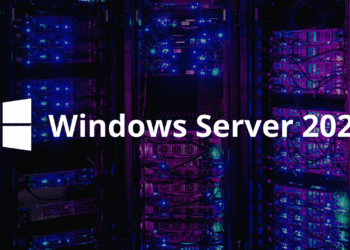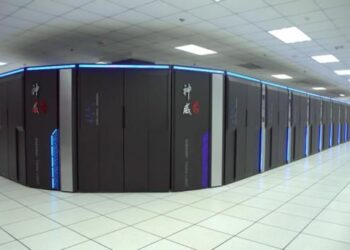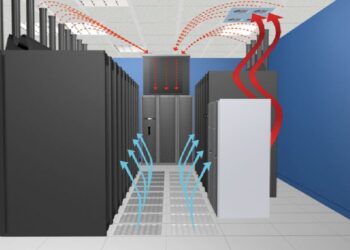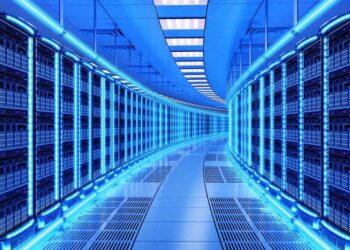In today’s rapidly evolving technological landscape, server innovations are at the heart of digital transformation. Over the past few decades, breakthrough developments in server architecture, cloud computing, and data center management have redefined how businesses operate and compete. This comprehensive article examines the evolution of server technologies, explores cutting-edge innovations, and explains their profound impact on the tech industry.
The digital revolution has accelerated at an unprecedented pace, with servers playing a crucial role in this transformation. As businesses shift towards cloud-based operations and big data analytics, the demand for faster, more reliable, and secure servers continues to grow. This article delves into how modern server innovations are not only meeting this demand but also driving new levels of efficiency, scalability, and sustainability across various sectors.
The rapid evolution of server technology is reshaping the tech industry. No longer confined to mere data processing and storage, servers now support a vast array of functions—from powering artificial intelligence (AI) and machine learning (ML) applications to managing the Internet of Things (IoT) ecosystems. These developments are leading to smarter, more integrated IT infrastructures that promise significant advancements in how information is managed and utilized.
Historical Evolution of Server Technologies
Understanding the present requires a look into the past. Traditionally, servers were large, centralized machines housed in dedicated data centers. These early systems were expensive to maintain, required significant physical space, and consumed enormous amounts of energy. The following points highlight the evolution of server technology over time:
A. Mainframe Era:
Mainframe computers were the pioneers in data processing, serving as the backbone of large organizations. Their centralized architecture allowed for efficient management of vast amounts of data, but scalability was limited.
B. Client-Server Architecture:
The advent of the client-server model brought a paradigm shift. By distributing computing tasks between clients and centralized servers, businesses experienced improved efficiency and flexibility.
C. Virtualization:
Virtualization technology allowed multiple virtual machines (VMs) to run on a single physical server. This breakthrough significantly reduced hardware costs and improved resource utilization.
D. Cloud Computing:
Cloud computing emerged as a disruptive force, offering on-demand access to computing resources over the internet. This innovation not only democratized access to high-performance servers but also introduced scalable solutions for businesses of all sizes.
These evolutionary steps set the stage for today’s advanced server innovations, which continue to push the boundaries of what is possible in computing.
The Emergence of Cloud Computing
Cloud computing has fundamentally altered how organizations deploy and manage their IT resources. By offering scalable, flexible, and cost-effective solutions, the cloud has enabled businesses to overcome the limitations of traditional on-premises servers. Key aspects of cloud computing include:
A. On-Demand Resource Allocation:
Cloud platforms allow organizations to scale their computing resources up or down based on demand. This dynamic resource allocation leads to better efficiency and cost management.
B. Global Accessibility:
Cloud-based servers can be accessed from anywhere in the world, breaking down geographical barriers and facilitating global collaboration.
C. Improved Redundancy and Disaster Recovery:
Cloud infrastructures typically feature multiple redundant data centers, ensuring high availability and robust disaster recovery capabilities.
D. Enhanced Security Protocols:
With advanced security measures, cloud providers invest heavily in protecting sensitive data, making cloud servers a safer alternative for many businesses.
These advantages have driven widespread adoption of cloud solutions across diverse industries, from healthcare to finance, making cloud computing a cornerstone of modern IT infrastructure.
Advancements in Server Hardware
While software innovations like virtualization and cloud computing have transformed server functionality, hardware advancements continue to enhance performance and efficiency. Modern server hardware now features sophisticated designs that improve processing speed, reduce power consumption, and enable greater scalability.
Next-Generation Processors
One of the most significant hardware improvements is the development of next-generation processors. These processors are engineered to handle complex computations at high speeds, supporting tasks such as real-time data analytics and AI-driven decision-making. By integrating multiple cores and leveraging parallel processing, modern processors offer unprecedented performance.
Solid-State Drives (SSDs) and Storage Solutions
The shift from traditional hard disk drives (HDDs) to solid-state drives (SSDs) has greatly improved server storage. SSDs provide faster read/write speeds, lower latency, and higher reliability. Innovations in storage technology have led to the development of high-capacity SSD arrays and hybrid storage solutions, combining the best aspects of HDDs and SSDs to meet diverse performance needs.
Energy Efficiency and Thermal Management
Energy consumption is a critical concern for data centers that host thousands of servers. Advances in cooling technologies, power management, and thermal design have significantly reduced energy costs and environmental impact. Modern servers are now designed with energy-efficient components, such as low-power CPUs and innovative cooling solutions that optimize airflow and heat dissipation.
Modular and Scalable Designs
To address the growing demand for flexibility, server manufacturers are adopting modular designs. These designs allow for easy upgrades and expansion without requiring a complete overhaul of the infrastructure. Modular servers can be tailored to specific workloads, making them ideal for businesses with evolving IT requirements.
Software-Driven Server Innovations
While hardware improvements provide the foundation for enhanced performance, software innovations are equally important in transforming server capabilities. The integration of advanced software solutions, such as containerization and orchestration tools, has revolutionized server management.
Virtualization and Containerization
Virtualization was a game-changer for server utilization, enabling multiple virtual environments to run on a single physical server. Building on this concept, containerization further optimizes resource use by isolating applications in lightweight containers. This approach offers several benefits:
A. Enhanced Portability:
Containers can run consistently across different environments, simplifying the deployment process.
B. Improved Resource Allocation:
Containers allow for precise allocation of computing resources, ensuring optimal performance for each application.
C. Streamlined DevOps Processes:
The use of containers has revolutionized development workflows, enabling faster and more efficient continuous integration and deployment (CI/CD).
Serverless Architectures
Serverless computing represents another leap forward in server innovation. By abstracting away the underlying server infrastructure, serverless architectures allow developers to focus solely on code. This model automatically scales resources based on demand and eliminates the need for manual server management. Key advantages include:
A. Cost Efficiency:
With serverless models, businesses pay only for the actual compute time used, reducing idle resource costs.
B. Scalability:
Serverless platforms can seamlessly adjust to high volumes of traffic without manual intervention.
C. Simplified Management:
Developers are freed from the complexities of managing server hardware and software, allowing them to concentrate on building robust applications.
Automation and Orchestration
Automation is at the heart of modern server management. With advanced orchestration tools, IT teams can automate routine tasks such as deployment, scaling, and monitoring. This not only reduces the likelihood of human error but also improves overall system reliability and uptime. Orchestration platforms, like Kubernetes, have become industry standards for managing containerized applications across clusters of servers.

Enhancing Data Center Efficiency
Modern data centers are the nerve centers of global digital operations. Innovations in server technology have led to significant improvements in data center efficiency, sustainability, and performance.
Green Data Centers
Environmental sustainability has become a critical consideration for data centers. As server innovations push the boundaries of performance, they also contribute to greener operations through:
A. Energy-Efficient Hardware:
New server designs incorporate low-power components and advanced thermal management systems that reduce energy consumption.
B. Renewable Energy Integration:
Many data centers are now powered by renewable energy sources, such as solar or wind, to minimize their carbon footprint.
C. Advanced Cooling Techniques:
Innovations in cooling technology, including liquid cooling and AI-driven climate control systems, ensure optimal temperature regulation while consuming less power.
Optimized Resource Management
Efficient resource management is vital for maintaining high levels of performance in data centers. Server innovations have led to:
A. Dynamic Load Balancing:
Intelligent load balancing ensures that computing resources are allocated where they are needed most, preventing overloading and underutilization.
B. Predictive Maintenance:
With real-time monitoring and advanced analytics, data centers can predict potential hardware failures before they occur, reducing downtime and maintenance costs.
C. Scalable Infrastructure:
Modular server designs and virtualization allow data centers to scale their operations seamlessly, accommodating growth without significant overhauls.
Revolutionizing Cybersecurity
As server technologies evolve, so too do the threats posed by cybercriminals. However, innovative security measures have emerged alongside these advancements to protect sensitive data and maintain system integrity.
Advanced Threat Detection
Modern servers incorporate sophisticated security protocols that detect and mitigate threats in real time. By integrating artificial intelligence and machine learning algorithms, servers can analyze network traffic and identify suspicious behavior faster than traditional systems. This proactive approach to threat detection is critical in an era where cyberattacks are increasingly complex and frequent.
Encryption and Data Protection
Data encryption has become a fundamental component of server security. Advanced encryption standards ensure that data is protected both at rest and in transit. Key developments include:
A. End-to-End Encryption:
Ensures that data is secure from the moment it leaves the source until it reaches its destination.
B. Multi-Factor Authentication (MFA):
Adds an extra layer of security by requiring multiple verification methods before granting access to sensitive systems.
C. Zero Trust Architectures:
Operate on the principle that no user or device should be trusted by default, further enhancing overall security.
Regular Software Updates
To combat evolving security threats, regular updates and patches are essential. Modern server management systems incorporate automated update mechanisms that ensure security protocols remain current without interrupting service. This constant vigilance is key to safeguarding digital assets in a hostile cyber environment.
Economic and Operational Impacts
Server innovations have a profound impact on both the economic and operational aspects of businesses. By reducing overhead costs, improving system performance, and enabling new business models, these advancements are transforming how companies operate in the digital age.
Cost Reduction and Efficiency
One of the most significant advantages of modern server technology is the ability to reduce operational costs. The benefits include:
A. Reduced Hardware Expenditure:
Virtualization and cloud computing minimize the need for expensive physical servers.
B. Lower Energy Bills:
Energy-efficient hardware and optimized cooling solutions lead to significant savings on energy consumption.
C. Operational Scalability:
The modular nature of modern servers allows companies to scale their infrastructure as needed without incurring major capital expenditures.
Boosting Business Agility
With enhanced server performance and reliability, businesses are able to react more swiftly to market changes. Faster data processing, seamless scalability, and robust cybersecurity enable companies to deploy new services and respond to customer needs in real time. This increased agility is a competitive advantage in today’s fast-paced market.
Enabling New Revenue Streams
Server innovations are also opening up new avenues for revenue generation. For example, the rise of serverless computing and cloud services has given birth to a host of new business models, including:
A. Subscription-Based Services:
Offering on-demand, scalable solutions to small and medium enterprises (SMEs) and startups.
B. Data Monetization:
Leveraging advanced data analytics and machine learning to derive valuable insights that can be commercialized.
C. Innovative Tech Solutions:
Creating new platforms and applications that capitalize on the high-performance capabilities of modern servers, such as real-time analytics, augmented reality (AR), and virtual reality (VR) applications.
Global Digital Transformation
The impact of server innovations is felt worldwide. As the backbone of digital infrastructure, advanced servers facilitate global connectivity, foster innovation, and drive economic growth. Here are some of the ways server advancements are influencing global trends:
A. Enhanced Connectivity:
Modern servers enable faster and more reliable internet connectivity, essential for the growth of digital economies.
B. Support for Emerging Technologies:
Innovations in server technology provide the necessary infrastructure for cutting-edge fields like AI, IoT, and blockchain, accelerating the pace of global digital transformation.
C. Bridging the Digital Divide:
By making high-performance computing accessible to a wider audience, server innovations help reduce the digital divide, empowering communities around the world with better access to information and technology.
Future Trends and Predictions
Looking ahead, the future of server innovations promises even more exciting developments. Several emerging trends are set to further transform the tech industry:
A. Edge Computing Expansion:
As more data is generated at the network’s edge, localized processing becomes critical. Edge computing reduces latency and improves real-time data processing, complementing centralized cloud infrastructures.
B. Artificial Intelligence Integration:
AI-driven server management systems will continue to evolve, providing predictive analytics, automated threat detection, and enhanced performance optimization.
C. Quantum Computing Prospects:
Although still in its infancy, quantum computing holds the potential to revolutionize server operations by solving complex problems that are currently intractable with classical computing.
D. Sustainability Focus:
Future server innovations are likely to emphasize sustainability even more, with advancements in renewable energy integration and eco-friendly hardware designs becoming standard.
E. Enhanced Interoperability:
With the increasing number of devices and platforms, the need for seamless interoperability among different systems will drive the development of universal protocols and standardized APIs for server communication.
Challenges and Considerations
While the benefits of server innovations are abundant, there are challenges that must be addressed to ensure a smooth transition into this new era of technology.
Security Vulnerabilities
As servers become more interconnected and sophisticated, they also present a larger target for cyberattacks. Continuous efforts are required to maintain robust security frameworks and to educate organizations about the importance of regular updates and proactive threat management.
Complexity in Management
The increasing complexity of modern server infrastructures, especially with hybrid cloud environments, requires specialized skills and tools for effective management. Training IT personnel and adopting automation are essential to mitigate the risks associated with misconfigurations and human error.
Regulatory Compliance
With data privacy and security becoming paramount, server innovations must also align with evolving regulations across different regions. Organizations need to navigate these regulatory frameworks carefully to avoid potential legal complications.

Cost of Transition
For many established businesses, transitioning from legacy systems to modern server architectures involves significant investment. While the long-term benefits are clear, the initial costs and technical challenges can be prohibitive for some organizations.
Environmental Impact
Although innovations have led to energy-efficient designs, the massive scale of modern data centers still contributes to environmental concerns. Continuous research into sustainable practices and the integration of renewable energy sources are necessary to minimize the ecological footprint of expanding digital infrastructures.
Conclusion
Server innovations are undeniably transforming the tech industry. From historical advancements in hardware and virtualization to modern breakthroughs in cloud computing and AI integration, these technologies are revolutionizing the way we process, store, and secure data. The evolution of server architectures not only enhances operational efficiency and reduces costs but also drives global digital transformation by supporting emerging technologies and fostering innovation.
As we look to the future, it is clear that servers will continue to play a pivotal role in shaping our digital landscape. With trends like edge computing, quantum processing, and sustainable data centers on the horizon, the journey of server innovation is far from over. Businesses that embrace these advancements will be well-positioned to capitalize on new opportunities, secure their digital assets, and contribute to a more connected and sustainable world.
In summary, the modern server ecosystem is a dynamic blend of hardware innovation, software-driven solutions, and environmentally conscious practices. It offers remarkable opportunities for economic growth, operational agility, and enhanced security. As server technology continues to evolve, it will remain a cornerstone of digital transformation, influencing industries across the globe and paving the way for a future defined by innovation and efficiency.










